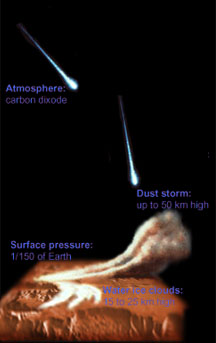This drawing represents several features of the atmosphere on Mars including: dust storms, an atmospheric pressure much lower than found on Earth, and a composition primarily of carbon dioxide.
Click on image for full size
Lower Atmosphere
The atmosphere of Mars is much thinner than that of Earth, with a surface
pressure averaging 1/100th that at the surface of the Earth. Surface
temperatures range from -113oC at the winter pole to 0oC on the dayside
during summer.
Although the length of the Martian day (24 hours and 37
minutes) and the tilt of its rotational axis (25 degrees) are similar to the values for these parameters on Earth (24 hours and 23.5 degrees), the eccentric
orbit of the planet about the Sun impacts the lengths of the
seasons the most. The atmosphere is composed mainly of carbon dioxide (95.3%),
nitrogen (2.7%), and argon (1.6%), with trace amounts of other gases.
Oxygen, which is so important to us on earth, makes up only 0.13% of the
atmosphere at Mars. There is only one-fourth as much water vapor in the
atmosphere.
Although small, this is thought to be enough to allow water
ice to be frozen into the near subsurface at mid to high latitudes. With so little water, clouds are rarely seen in the Martian sky. The
possible role in the distant past of liquid water in forming the dry river
beds which we can see is still unknown, particularly because water ice is
not plentiful on the surface of the planet.
You might also be interested in:
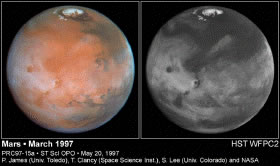
Unlike the Earth, where clouds are found around the entire globe, on Mars, clouds seem to be plentiful only in the middle latitudes, as shown in this Hubble telescope image. This may be because water of
...more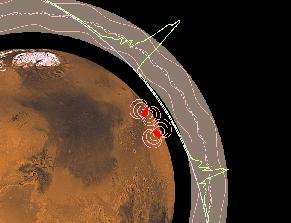
The Martian ionosphere is a layer of gas composed of ions and electrons that extends from about 75 miles up to several hundred miles up above the surface. The layer is shown schematically by the shaded
...more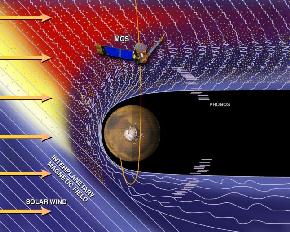
An important new result from the Mars Global Surveyor (MGS) mission is the definite confirmation of the presence of a magnetic field near Mars. The magnetic field leads to the formation of a magnetosphere,
...more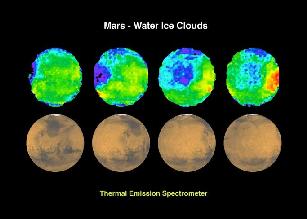
This graph, taken by Mars Global Surveyor, shows proof that the clouds of Mars are made of water. The sequence shows the water clouds moving across the face of Mars. The Mariner 9 mission was the first
...more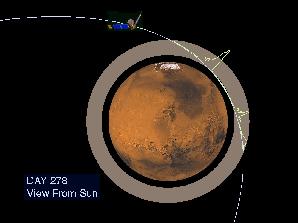
On September 12, 1997, the Mars Global Surveyor successfully entered a highly elliptical orbit around Mars. To get into the near-circular, near-polar, low-altitude orbit necessary to map the surface of
...more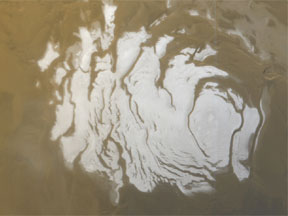
The Martian South Pole was first imaged by Mariner 7. The south polar region is part of the highlands of Mars, consisting of old, cratered terrain, and other interesting geologic features. The Mariner
...more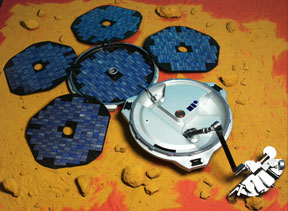
The European Space Agency (ESA) launched a mission to Mars called "Mars Express" in June of 2003. The Mars Express spacecraft has two parts: an orbiter that will circle Mars for at least one Martian year
...more


